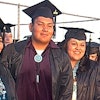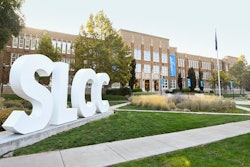NEW YORK
Ellis Island is expanding its story of U.S. immigration history, including for the first time Native Americans and African slaves and adding modern arrivals.
A new center being created within the Ellis Island Immigration Museum will tell the history of arrivals both before and after the peak immigration era in the United States of 1892 to 1954, the Statue of Liberty-Ellis Island Foundation said last week.
The story of the migration to America “goes back to the beginning of the country and comes up to the present. So there were a good number of people whose stories weren’t told at Ellis Island,” said Stephen Briganti, the foundation’s president and chief executive.
The center, he said, will “cover the entire gamut of the populating of America.”
Exhibits will include Native Americans, Europeans who landed on the Eastern seaboard from the 1600s through 1892, Africans brought here forcibly by slave traders and today’s immigrants from around the globe.
“It’s an important story to tell because Ellis Island is a symbol of inclusion, it’s a symbol of diversity and that’s what this country is,” Briganti said.
When the Peopling of America Center is completed in 2011, the full museum will be renamed Ellis Island: The National Museum of Immigration.
Interactive exhibits will trace how waves of immigration changed American towns and will allow visitors to trace their family’s history.
The $20 million, 20,000-square-foot center, designed by Edwin Schlossberg of ESI Design, will use space that had been an existing gallery and an adjoining building used by museum staff.
Briganti said the foundation has met more than 75 percent of its fundraising goal.
Email the editor: [email protected]
Click here to post and read comments
© Copyright 2005 by DiverseEducation.com





















